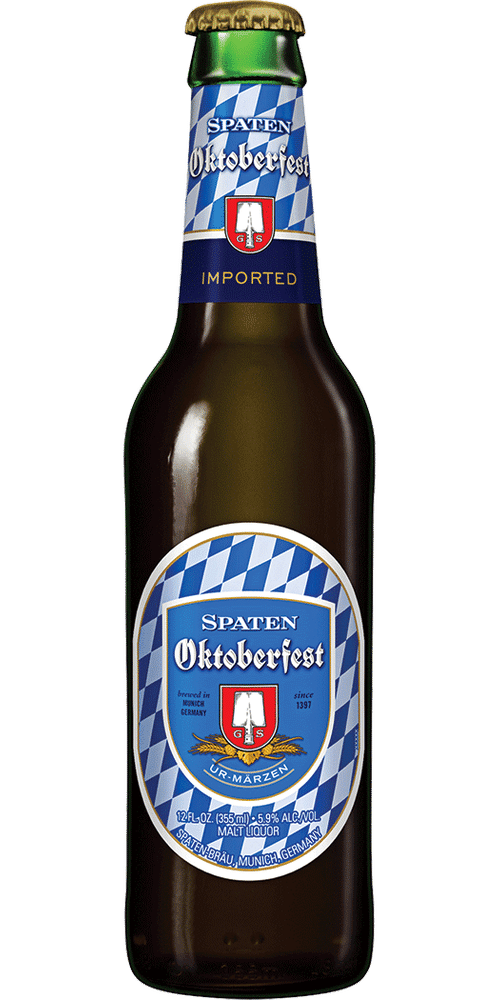
ORIGIN: Munich, Germany 1841ish
HISTORY: Brewed in March as a stronger “March beer” and lagered in cold caves over the summer. Modern versions trace back to the lager developed by Spaten in 1841, contemporaneous to the development of Vienna lager. The German amber lager version (in the Viennese style of the time) was first served at Oktoberfest in 1872, a tradition that lasted until 1990 when the golden Festbier was adopted as the standard festival beer.
APPEARANCE: Amber orange to deep reddish-copper color; should not be golden. Bright clarity, with persistent, off-white foam stand.
SRM: 8-17 (show SRM Color Scale)
AROMA: Moderate intensity aroma of German malt, typically rich, bready, somewhat toasty, with light bread crust notes. Clean lager fermentation character. No hop aroma. Caramel, dry-biscuity, or roasted malt aromas inappropriate. Very light alcohol might be detected but should never be sharp. Clean, elegant malt richness should be the primary aroma
FLAVOR PROFILE: Initial malt flavor often suggests sweetness, but finish is moderately-dry to dry. Distinctive and complex maltiness often includes a bready, toasty aspect. Hop bitterness is moderate, and the hop flavor is low to none (German types: complex, floral, herbal, or spicy). Hops provide sufficient balance that the malty palate and finish do not seem sweet. The aftertaste is malty, with the same elegant, rich malt flavors lingering. Noticeable caramel, biscuit, or roasted flavors are inappropriate. Clean lager fermentation profile.
BITTERNESS: 18 – 24 IBU’s
ABV: 5.8 – 6.3%
COMMERCIAL EXAMPLES: Spaten Oktoberfestbier Ur-Märzen, Great Lakes Oktoberfest, Brooklyn Oktoberfest, Sierra Nevada Oktoberfest
RECOMMENDED FOOD PAIRINGS: Grilled Sausages and Chicken. Pizza with a variety of toppings. Richly flavored Gouda and Alpine cheeses like Gruyère, Fontina and Comté.

